In a 2015 address delivered in Mauritius, Prime Minister Narendra Modi indulged in some curious historical revisionism worth considering today. “To me the blue chakra or wheel in India’s national flag represents the potential of Blue Revolution or the Ocean Economy,” Modi declared. “That is how central the Ocean Economy is to us.”
Modi’s speech five years ago occasioned the christening of a Calcutta-built warship purchased for the Mauritius National Coast Guard. The address pivoted from the ship’s launch to proclaiming India as the fulcrum of a global ocean economy—hence Modi’s intentional reimagining of the Ashokan wheel: “we must promote greater collaboration in trade, tourism and investment; infrastructure development; marine science and technology; sustainable fisheries; protection of marine environment; and, overall development of Ocean or Blue Economy.”
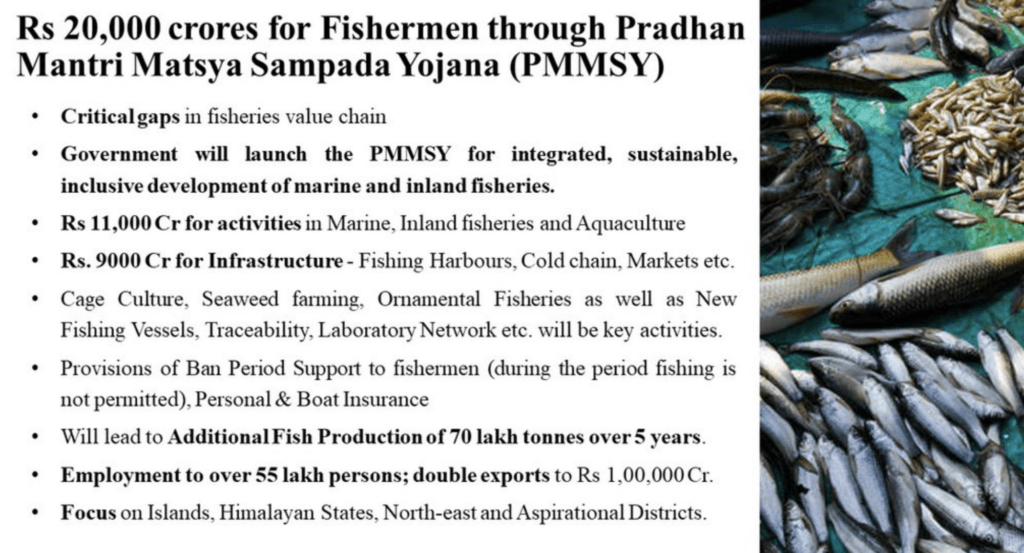
This fantasy of an ocean of wealth helps us understand the Central government’s recent allocation of ₹20,000 crores to the Pradhan Mantri Matsya Sampada Yojna (PM-MSY). The scheme envisions astounding growth for marine and inland fisheries, as well as aquaculture. It projects doubling exports of fish products to ₹1,000,000 crores and boosting fish production by 70 lakh tonnes within five years (Figure 1).
The media described the scheme as an ostensible “stimulus” package to address the COVID-19 crisis, which has devastated Indian fisheries. Linked to global markets, fish prices collapsed even before the Indian public began to feel the pandemic’s effects, worsening what already appeared to be a bad year for fishing. The national lockdown—albeit necessary—further disrupted supply chains. Fishers were forced to discard fish stocks, while shops, cold storage, and processors closed. Thousands of migrant fishworkers were left stranded.
Yet, the PM-MSY agenda offers no meaningful emergency relief (indeed, the idea was announced last July). A 26 May briefing by Union Minister for Fisheries, Animal Husbandry and Dairying Giriraj Singh, hailed the funding announcement as “a scheme to bring about Blue Revolution.” According to a framework document, PM-MSY “intends to address critical gaps in fish production and productivity, quality, technology, post-harvest infrastructure and management, modernisation and strengthening of the value chain, traceability, establishing a robust fisheries management framework and fishers’ welfare.”
The framework’s expansionary ambitions—couched in buzzwords and jargon—also dovetail with a cryptic attempt to enact the pro-growth National Fisheries Policy 2020, while robust civil society participation is curtailed by the lockdown. Simply put, PM-MSY must be understood for its far-reaching political and economic goals which potentially enable a massive overhaul of livelihoods and environments.
Does fishery rhyme with poverty?
Roughly 120 lakh people derive livelihoods from Indian fisheries (Table 1). A commonplace assumption holds that most of these are poor, “backward”, and in need of “upliftment”. Meanwhile, total annual fish production has more than quadrupled over the last three decades, from 29.6 lakh tonnes in 1988, to 125.9 lakh tonnes in 2018. Much of this growth stems from an aquaculture boom since the 1980s.

For many, fishing is indeed precarious, and Indian fishers of all scales report empty nets and stomachs. Yet critical scholars question the narrative that “fishery rhymes with poverty.” Simply put, fisheries do not inherently produce destitution, but fishers are beset by numerous, often external, challenges including uneven development, labour exploitation, gender bias, perverse government incentives, poor regulatory safeguards, changing climate, industrial pollution, and the dispossession of coastal and ocean space. Many fishers overcome these struggles only by fishing longer and harder, a kind of self-exploitation that also drives ecologically unsustainable harvesting.
The sector still generates spectacular profits for some, including many owners of heavy fishery capital, like large trawlers or processing plants. The inequalities and exploitation that cause poverty for many also drive wealth accumulation for a few. One simple example of this trend can be seen from the increasing concentration of marine fish catch in the industrial, or “mechanised,” sector (Table 2). While some large-scale fishing boats produce fresh fish for local consumption, these large boats—some 20 metres long—routinely sell to international markets or industrial processors. They are more likely to have corporate or absentee owners. Given their mobility, they can also simply change fishing spots or targets when a particular resource is depleted. Their primary contribution to India’s thousands of fishing communities is an opportunity for waged labour.

That’s not to say that all mechanised boats are necessarily the villains in this story. Many are owned by traditional fishers who also face the pressures of competition and debt. However, many owners pass this stress on to labour through wage precarity, and to the environment with rapacious, unsustainable harvesting.
The upward redistribution of wealth is keenly felt by small-scale fishers, who typically work with family, use small engines (or none at all), and consume much of their catch. Mounting competition from mechanised boats and degradation of coastal waters forces the poorest to abandon their own gear on beaches and riverbanks for work in urban harbours or fish farms. This is particularly evident in the migration of fishers—often under precarious conditions—from less productive waters off the East coast, to industrial harbours on the West.
For example, on Karnataka’s urban docks, workers speak languages of every coastal state and Hindi. They pack into tents on boat decks at night, sleeping side-by-side amidst heat and mosquitoes; many subsist on rice and fish not valuable enough to sell. “We come here because we can find paid work on bigger boats,” one Tamil fisher told me during research in 2016 in Malpe, Karnataka. “They recruited in my village, so several of us arrived together. We work and live on the boat.”
Fisheries development, but for whom?
India is hardly alone in embracing what critical scholars call the Blue Economy Paradigm. Yet the PM-MSY scheme relies on more than the global fixation on “blue growth.” It also draws on rhetoric rooted in our colonial past.
British imperialists across the Presidencies sought to foster an industrial ocean. Administrators in Bombay and Bengal experimented with large-scale trawl surveys. A Madras Presidency official in 1906 declared fisheries “primitive, insufficiently effective, restricted in area, slow in communications,” and desperate to be “modernized and improved by the aid of science, knowledge and capital.” Colonisers even demarcated the continent’s near-shore waters for “backwards” indigenous fishers, while declaring the vast, productive continental shelf open for capitalism. Similarly, 21st-century Indian policy relegates small-scale, “traditional” fishers to near-shore, polluted, and overfished waters, while supporting industrial production in the wider Exclusive Economic Zone.
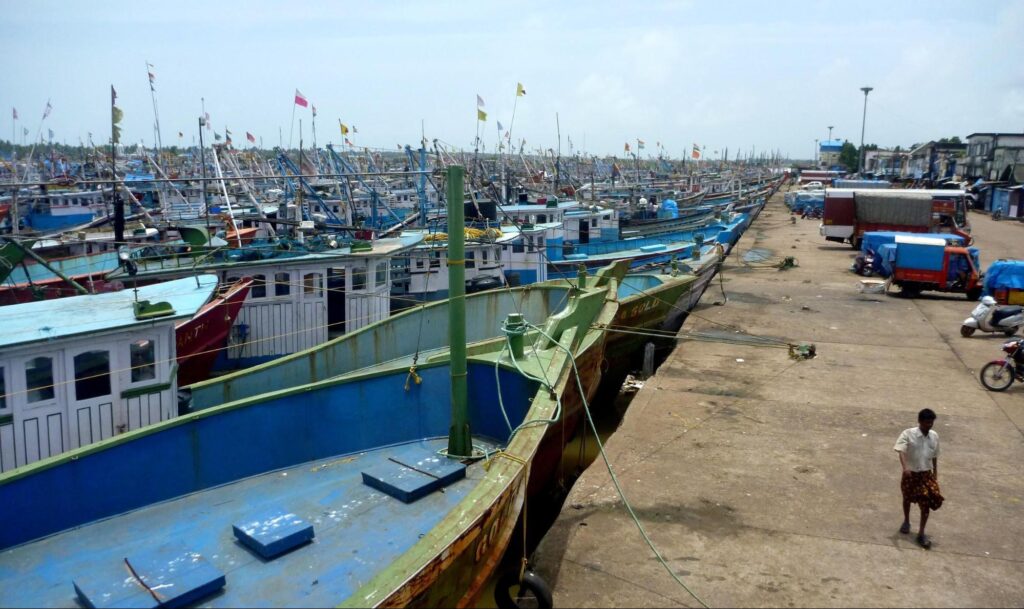
The priorities of PM-MSY—including harbours, cold storage, marketing logistics, high-tech processing, and biotechnology—are neither new or nor innovative. Incentives for industrial, high-capital fishing have been a part of every Five-Year Plan since Independence. Notably, such development and capital remain unevenly distributed. In the last Central government marine fisher census, fewer than one in 20 families owned a boat with a small motor; family-owned mechanised boats were about as rare. Most fishing households do not possess sufficient property (or even official patta) necessary either to obtain financing security or launch an aquaculture venture.
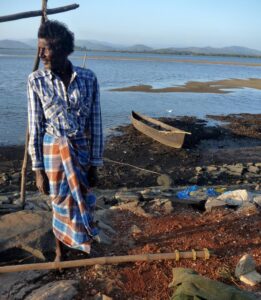
Nothing announced under PM-MSY suggests that it will combat such inequality; bank lending for boats, aquaculture farms, or other enterprises—even on concessionary terms—will likely flow to businesses (or at best, wealthy families) that can raise matching capital, provide collateral, or navigate the bureaucracy. Simply put, the plan privileges existing capitalists and external investors. The interests of small-scale fishers, or indeed the environment, are sidelined with vague jargon in the PM-MSY framework such as “…coastal villages would be leveraged and channelized for amplifying the economic benefits in a sustainable manner.”
Fishers are rightly angry. All-India bodies like the National Fishworkers Forum (NFF), as well as state organisations, fear the government will only exacerbate the festering structural deprivation of smaller fishers now compounded by the pandemic. Kerala Matsya Thozhilali Aikya Vedi president Charles George plainly stated the conundrum: “Most of us bought the fishing boats by taking bank loans. Due to the dwindling catch, we are unable to pay them back.” Said Vincent Robert, a fisherman from Vizhinjam in Thiruvananthapuram, “Big boat owners will not be affected all that much but we—small-scale fishermen—are really troubled. We are badly affected by this [the pandemic]. The government should consider this a huge problem.”
This is the first great contradiction inherent in PM-MSY: By privileging big capital and large-scale commodity production, the government undermines those fishers who urgently require state assistance for their basic subsistence.
Environmental Consequences and Food Security
Driven by interconnected, fluctuating environmental factors such as currents, water temperatures, and nutrients, fisheries constitute a natural resource that cannot sustain endless growth—ecologically, socially, or economically. Yet, PM-MSY relies on a troubling blanket faith in near-limitless fisheries production. The fantastic projection of an additional 70 lakh tonnes of fish in five years represents a more than 50% increase over current annual levels.
Consider that marine capture fisheries have remained stagnant over the last decade, producing an average of 3.6 million tonnes of fish annually (See Table 3). This production plateau, along with evidence of ecological change, suggests that Indian waters are already overcapitalised. Current levels of production may already be unsustainable, even without taking into account the grandiose dreams of the PM-MSY.

While there may be some untapped potential in the oceanic basins and abyssal plains beyond depths of 500 metres, there are serious questions about the ecological sustainability of deep water fishing. Such a spatial expansion would also require massive trawlers on the scale of international distant water fleets, which remain the problematic domain of an extractive capitalist elite.
Given that capture fishing is unlikely to sustain growth, government plans for expansion will necessarily intensify aquaculture development. This is the least studied segment of Indian fisheries, and the one most subject to capitalist logic with respect to land and environmental pollution. Also, boosting aquaculture production will necessarily divert captured fish into feed for farmed fish, undermining food security and sovereignty for coastal peoples, and potentially fueling worrisome land grabs.
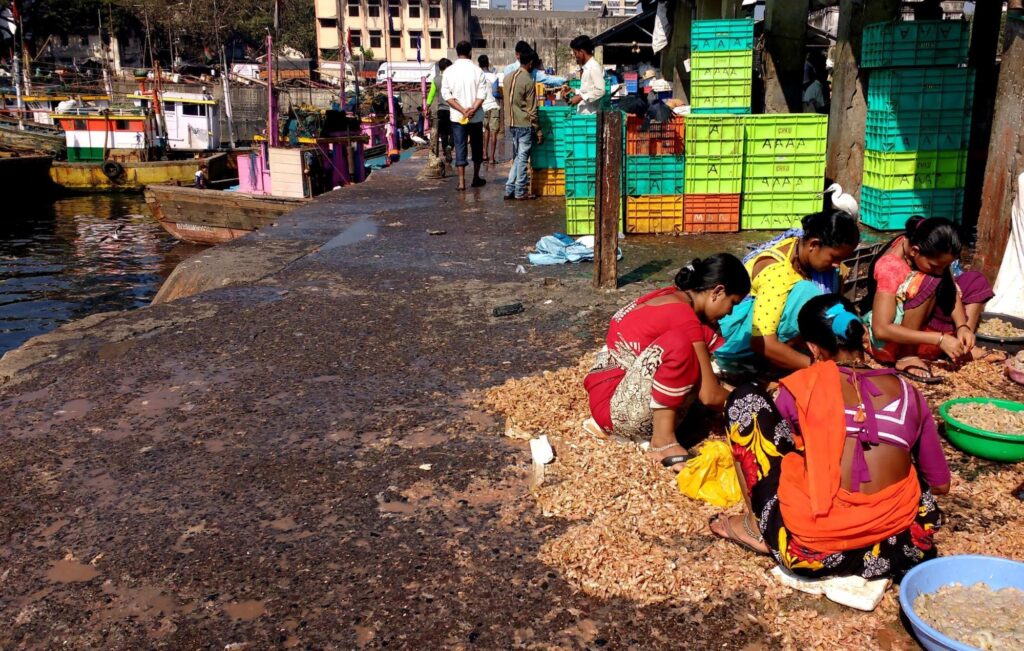
Another wishful ambition of the PM-MSY must be considered here, too: the doubling of current exports to ₹1,000,000 crores (without any discernible calculations behind this projection). While export profits, in theory, may trickle down to producers, by definition they preclude local consumption of fish as food. The government’s agenda, then, supports trade and finance sectors that demand foreign exchange, despite any rhetoric to the contrary.
This represents the second great contradiction of the PM-MSY agenda: By privileging capital and finance in development, the government will transform fish—hailed as an indigenous, renewable protein source—into a currency for national and international trade goals. Officials appear deaf to fisher activists and scholars who have flagged this trend as “at odds with improving human nutrition for those who need it most.”
Development without democracy?
We must consider an equally worrisome trend in Indian policymaking, visible in the current draft of the National Fisheries Policy. On 28 April, the National Fisheries Development Board posted an English copy of the proposed policy on its website, with the alleged goal of seeking comments. Deliberation is now effectively limited to those commenters with internet connections who can read English.
The NFF offered a stark critique in a 1 May e-mailed statement: “the proposed draft is very hurriedly published document without any consultation with the stakeholders at any level and without any serious thought. At a time when on account of the lockdown, individuals and organizations are unable to physically meet and conduct consultations, it is highly improbable that the response to the draft will be reflective of the needs and demands of the stakeholders.”
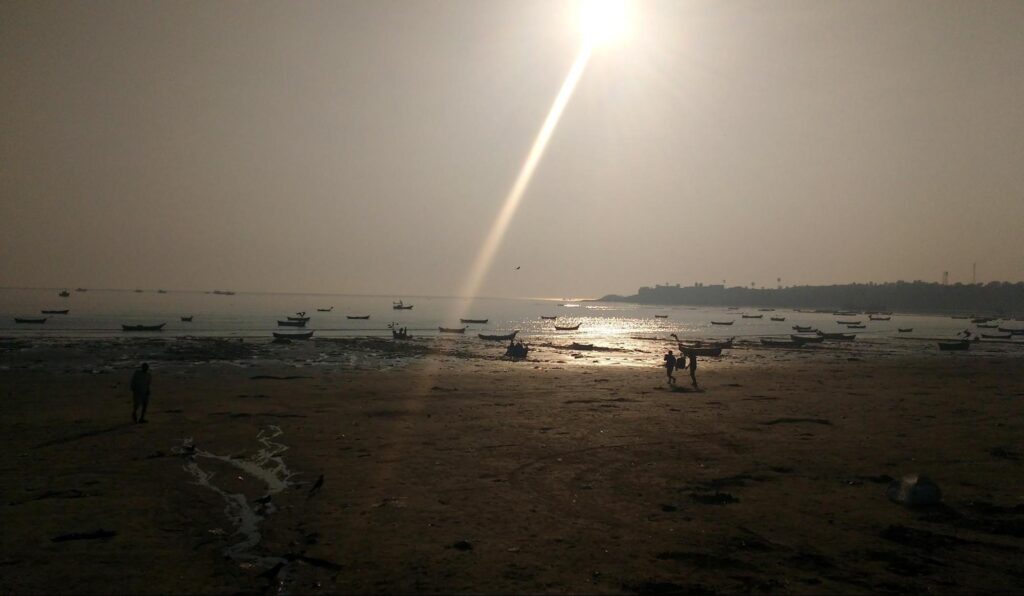
This would be disconcerting enough if it were an isolated incident. But, the government has also weakened other environmental standards such as Coastal Regulation Zone norms. Meanwhile, a new proposed Environmental Impact Assessment rule also drew opposition from activists nationwide. Together, these and other moves constitute a multi-pronged assault—under the cover of the pandemic—on a basic principle of democracy: informed consent of the governed.
This, then, is the third great contradiction of PM-MSY. While proclaiming to support development for all, it relies on anti-democratic—indeed, deeply colonial—ideas and methods. Even cursory analysis shows that PM-MSY has the potential of doubling down on worrying trends toward capitalist exploitation at the expense of Indian fishers. The government’s logic may indeed prompt a “blue revolution,” but only on behalf of the wealthy—or at best, the consumer—at the expense of fishers and the ocean itself. That is the antithesis of sabka saath sabka vikas.
Featured image courtesy of Adam Jadhav. | Views expressed are personal.




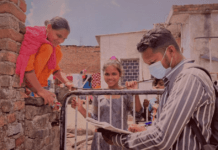


[…] You May Also Like: The Shore Scene: PM-MSY’s Fisheries Development Promises Anything But Sabka Vikas […]
[…] You May Also Like: The Shore Scene: PM-MSY’s Fisheries Development Promises Anything But Sabka Vikas […]
[…] such lines of thinking are directly at odds with the disconnect between production and consumption witnessed in centralised fishing policies or companies. “The way small-scale fishers think about […]
[…] the central government in May 2020 this year, to bring about the “Blue Revolution”. It was criticised for focusing on economic and technological growth as opposed to catering to the food security […]
[…] such lines of thinking are directly at odds with the disconnect between production and consumption witnessed in centralised fishing policies or companies. “The way small-scale fishers think about […]
[…] You May Also Like: PM-MSY’s Fisheries Development Promises Anything But Sabka Vikas […]
[…] these schemes are neither novel nor innovative; they reiterate a decades-long production-centric development paradigm, which has always worked to incentivise industrial, capital-intensive fishing. A production-centric […]
[…] You May Also Like: PM-MSY’s Fisheries Development Promises Anything But Sabka Vikas […]
[…] and “free trade” regulations matters more than ever because Indian policy makers are eyeing fantastic and dangerously high levels of fisheries production. Production subsidies, say Karnad and Theerthala, will likely support overharvesting of […]
[…] by the central government in May 2020 this year, to bring about the “Blue Revolution”. It was criticised for focusing on economic and technological growth as opposed to catering to the food security and […]
[…] 20,500 crore investment in marine fisheries, inland fisheries, and aquaculture. The new scheme does little to help fishers directly, mainly supports the wealthier and more powerful actors within the sector, and lacks provisions to […]
[…] 20,500 crore investment in marine fisheries, inland fisheries, and aquaculture. The new scheme does little to help fishers directly, mainly supports the wealthier and more powerful actors within the sector, and lacks provisions to […]
[…] 20,500 crore investment in marine fisheries, inland fisheries, and aquaculture. The new scheme does little to help fishers directly, mainly supports the wealthier and more powerful actors within the sector, and lacks provisions to […]
[…] 20,500 crore investment in marine fisheries, inland fisheries, and aquaculture. The new scheme does little to help fishers directly, mainly supports the wealthier and more powerful actors within the sector, and lacks provisions to […]
[…] 20,500 crore investment in marine fisheries, inland fisheries, and aquaculture. The new scheme does little to help fishers directly, mainly supports the wealthier and more powerful actors within the sector, and lacks provisions to […]
[…] financial investment in marine fisheries, inland fisheries, and aquaculture. The brand-new plan does little to assist fishers straight, generally supports the wealthier and more effective stars within the sector, and does not have […]
[…] 20,500 crore investment in marine fisheries, inland fisheries, and aquaculture. The new scheme does little to help fishers directly, mainly supports the wealthier and more powerful actors within the sector, and lacks provisions to […]